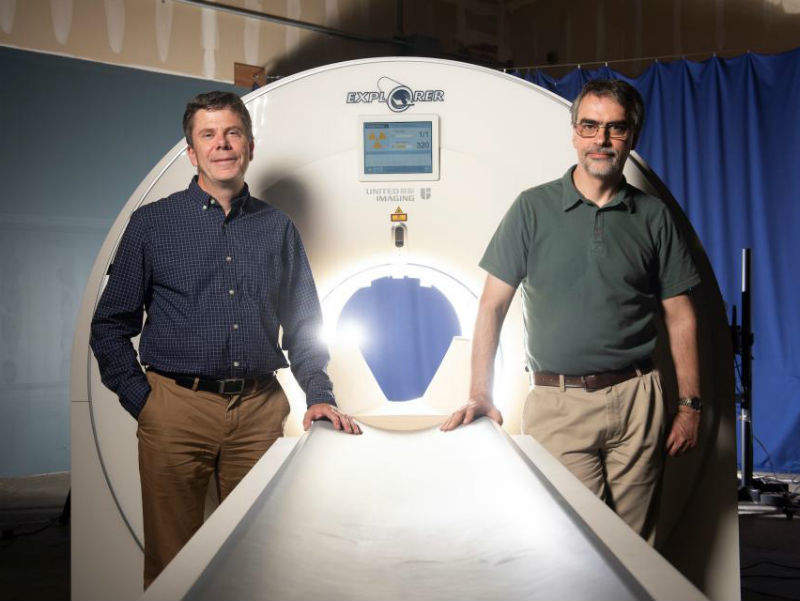
Human images from EXPLORER, the world’s first medical imaging scanner that can capture a 3D picture of an entire body at once have been released.
The total-body scanner was created by UC Davis scientists Simon Cherry and Ramsey Badawi. EXPLORER combines positron emission tomography (PET) and X-ray computed tomography (CT) so that it is able to image the whole body at the same time.
The researchers say the machine captures radiation far more efficiently than other scanners, which enables it to produce an image in as little as one second and will eventually produce recordings that can track specially tagged drugs as they move through the body.
The developers think the total-body scanner technology will have countless applications, ranging from improving diagnostics to tracking disease progression and aiding research for new drug therapies.
The first human scans taken by EXPLORER will be shown at the Radiological Society of North America meeting in Chicago, which takes place this Saturday.
The scanner has been developed in partnership with Shanghai-based United Imaging Healthcare (UIH), which used its latest technology to create the platform. UIH will eventually manufacture the scanners for the broader health care market.
Cherry said: “While I had imagined what the images would look like for years, nothing prepared me for the incredible detail we could see on that first scan. While there is still a lot of careful analysis to do, I think we already know that EXPLORER is delivering roughly what we had promised.”
How well do you really know your competitors?
Access the most comprehensive Company Profiles on the market, powered by GlobalData. Save hours of research. Gain competitive edge.

Thank you!
Your download email will arrive shortly
Not ready to buy yet? Download a free sample
We are confident about the unique quality of our Company Profiles. However, we want you to make the most beneficial decision for your business, so we offer a free sample that you can download by submitting the below form
By GlobalDataBadawi added: “The level of detail was astonishing, especially once we got the reconstruction method a bit more optimized. We could see features that you just don’t see on regular PET scans and the dynamic sequence showing the radiotracer moving around the body in three dimensions over time was, frankly, mind-blowing. There is no other device that can obtain data like this in humans, so this is truly novel.”
Cherry and Badawi first came up the concept for a total-body scanner 13 years ago. In 2011 they received a $1.5m grant from the National Cancer Institute, which allowed them to put their project together. They were given a further boost in 2015 with a $15.5m grant from the National Institutes of Health.
Cherry thinks EXPLORER will have a profound impact on clinical research and patient care because it produces higher-quality diagnostic PET scans than any existing scanners. EXPLORER also scans up to 40 times faster than current PET scans and is capable of producing a diagnostic scan of the entire body in as little as 20 to 30 seconds. The device uses up to 40 times less radiation than current PET scanners, which makes repeated studies of patients more feasible.
EXPLORER will be the first scanner that can enable physicians to evaluate what is happening in all the organs and tissues of the body simultaneously. For example, the scanner could be used to measure the spread of cancer.
Cherry said: “I don’t think it will be long before we see a number of EXPLORER systems around the world. But that depends on demonstrating the benefits of the system, both clinically and for research. Now, our focus turns to planning the studies that will demonstrate how EXPLORER will benefit our patients and contribute to our knowledge of the whole human body in health and disease.”
The first EXPLORER system is set to be installed at the EXPLORER Imaging Center in leased space in Sacramento. The researchers hope to start research projects with the scanner in June 2019.






